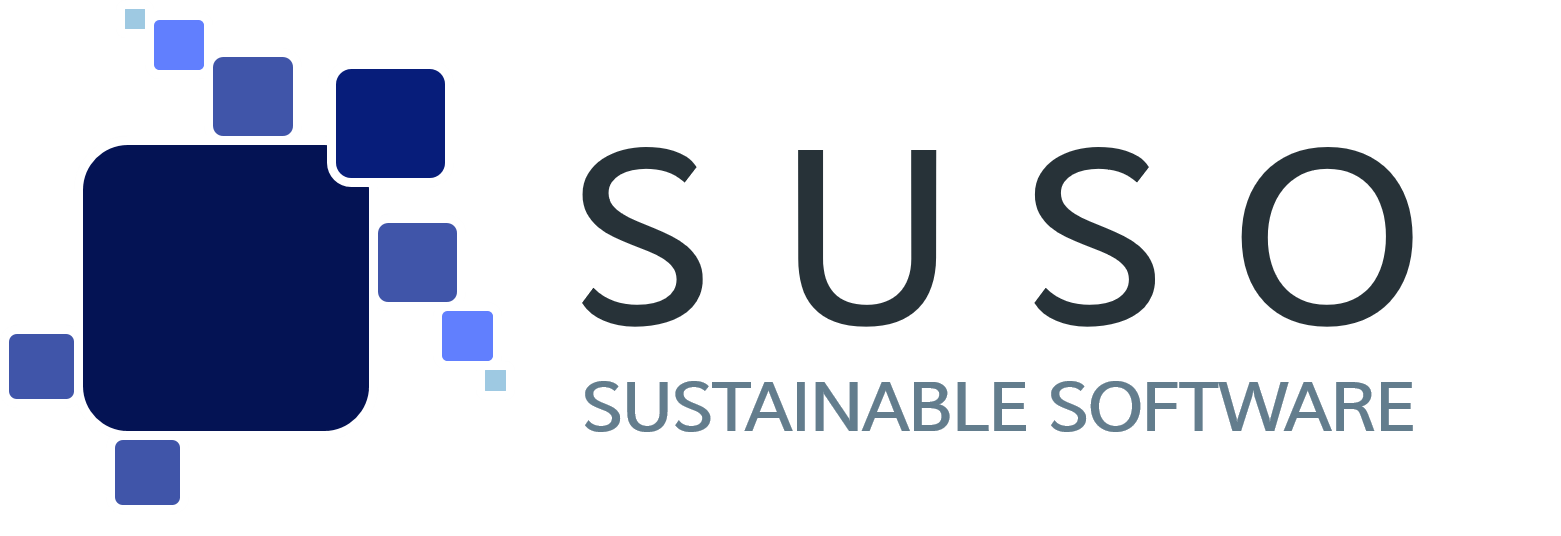The future of AI is green: A primer for sustainable software developers
AI is probably the best or worst thing that can happen to humanity.
– Stephen Hawking (physicist)
“I’m increasingly inclined to think that there should be some regulatory oversight, maybe at the national and international level, just to make sure that we don’t do something very foolish. I mean with artificial intelligence we’re summoning the demon.”
– Elon Musk (Tesla, SpaceX Neuralink, and The Boring Company)
“AI will probably lead to the end of the world, but in the meantime, there will be great companies.”
– Sam Altman, (CEO of OpenAI)
Artificial intelligence (AI) is one of the key technologies slowly but surely moving into the most diverse areas of our lives. Whether in the automotive industry, healthcare or the financial sector, AI-based applications promise more efficient and precise solutions. But this technology also poses challenges and risks, especially in terms of sustainability. AI systems are energy-hungry and generate large amounts of CO2 emissions. It is therefore crucial that the development and implementation of AI is made more sustainable. In this article, we will therefore look at how AI can be built more sustainably, the benefits of doing so, and the challenges that need to be overcome.
Green Artificial Intelligence (Green AI) refers to the concepts and practices that aim to reduce the environmental impact of artificial intelligence (AI). This includes developing AI systems that are more energy efficient and environmentally friendly, as well as using AI technologies to find more sustainable solutions to environmental problems. To achieve Green AI, AI developers, engineers, and researchers must apply a variety of approaches, including optimizing AI algorithms and models, developing low-power hardware and infrastructure, improving data collection and processing, and using AI to find sustainable solutions to environmental problems. In addition, we suggest you to read our article From Bits and Bytes to Sustainability: How software developers can do their part through Green Coding.
How AI influences the environment
AI systems influence the environment in different ways. On the one hand, they help reduce greenhouse gas emissions, for example by improving the energy efficiency of buildings and factories or optimizing traffic. On the other hand, they cause large amounts of CO2 emissions themselves, especially due to the high energy consumption involved in training and operating AI models. A study by the “Centre for Energy-Efficient Telecommunications” (CEET) and the “Swedish KTH Royal Institute of Technology” estimates that information and communications technology (ICT) already accounts for around 10% of energy consumption worldwide. This figure will continue to increase in the future as more and more AI systems are deployed. To meet these challenges, AI developers and companies must implement strategies and technologies to reduce the energy consumption of AI systems and use renewable energy sources.
Use our tools for sustainable software
Our three tools can help software companies and practitioners to gain the knowledge, the skills, and the funding they need to create sustainable software products and services that meet social, environmental, and economic needs. By taking advantage of these tools, your team can position your organization as a leader in sustainable software development, and help create a better future for all.
The challenge of Green AI
Data quality: AI models are only as good as the data on which they are trained. To develop sustainable AI models, the underlying data must be of high quality and take sustainability aspects into account.
Computing power: A lot of computing power, that is what AI requires! Especially when processing large amounts of data. The high amount of energy leads to a high carbon footprint.
Hardware recycling: The increasing amount of e-waste poses a challenge for the sustainable development of AI. A sustainable solution could be to recycle and reuse used hardware to minimize the need for new resources.
Regulation: There is currently a lack of clear regulations and guidelines for the sustainable development of AI. Stronger regulation could help move the industry in a more sustainable direction.
Lack of awareness: Many software companies and developers are unaware of the impact of AI on the environment. Better awareness and education could help raise awareness of the issue and encourage the development of sustainable AI models.
Best practices for the sustainable development of AI
Selecting efficient algorithms: When selecting algorithms, AI developers should make sure that they are energy efficient. There are several algorithms that require fewer resources than others. Selecting the right algorithms can significantly reduce the energy consumption of AI systems.
Data management: The way data is stored and processed in AI systems can have a significant impact on energy consumption. Efficient management of data can help reduce energy consumption. This includes, for example, using data compression technologies and implementing methods to remove duplicates.
Use of cloud computing: Cloud computing offers many benefits, particularly in terms of scalability and flexibility. However, it can also cause significant energy consumption. AI developers should therefore take care to use cloud resources efficiently and avoid unnecessary resources.
Use of renewable energy: To reduce the environmental footprint of AI systems, companies should use renewable energy sources such as solar and wind power to meet data center energy needs.
End-of-life management: AI systems typically have a limited lifespan. Therefore, enterprises should implement strategies and technologies to minimize the environmental impact of disposing of AI systems. One way is to ensure that the components of AI systems can be reused or recycled.
Three reasons why software companies can benefit from Green AI
Social, environmental and economic responsibility: Software companies have a responsibility for the impact of their products on society and the environment. By developing sustainable AI, they can ensure that their technology has a positive impact and does not contribute to worsening environmental problems.
Competitive advantage: Sustainability is increasingly becoming an important competitive factor for companies. Companies that invest in sustainable technologies can differentiate themselves from their competitors and reach out to new audiences.
Cost savings: Sustainable AI can help use resources and energy more efficiently. This can help reduce costs and make the company more economical.
Artificial intelligence is not just about green energy
The development of software under socially just aspects has become increasingly important in recent years. One organization that comprehensively addresses the integration of social, environmental, and economic issues related to ethics, morality, and sustainability is AlgorithmWatch: “AlgorithmWatch is a nonprofit research and advocacy organization dedicated to monitoring, analyzing, and studying automated decision-making systems and their impact on society.” Today, the organization lists over 160 tools, 66 of which directly or indirectly address this concern and which we analyzed in more detail.
The frameworks can be roughly divided into the following categories:
- First, there are those that focus generally on different areas. They provide a bird’s eye view of the potential impacts of software systems and are therefore suitable for identifying and discussing them. The SustAIn and the Sustainability Awareness Framework (SusAF) should be mentioned here. It is also noticeable that these frameworks are aimed at software practitioners.
- Second, there are those that focus on specific selected topics, such as bias (The Imperial Machines Project), fairness (Fairness Aware Ranking), and privacy (VBRE). In most cases, they are aimed at software developers.
- Third, it is about developing technical tools to check algorithms. Most of these tools, such as AI-Fairness360 and Fairlearn, focus on analyzing biases in datasets. In most cases, they are aimed at data scientists.
There are a variety of arguments that have led us to use the SusAF in our workshops and to place it on this website as a tool. The SusAF helps software practitioners to enter into a dialog with different stakeholders. Thus, it is a participatory approach. Participants collectively seek interactions between software and five dimensions: social, individual, environmental, economic, and technical. In addition, the SusAF allows participants to identify impacts over time; different dimensions and temporalities can be analyzed. Furthermore, the SusAF has a simple workshop process, making it easy to use. Click here to try it out!
Source for this section (our article): Lammert, Dominic; Abdullai, Larry; Betz, Stefanie; Porras, Jari (2023). Sustainability for Artificial Intelligence Products and Services – Initial How-To for IT Praciticioners Proceedings of the 56th Hawaii International Conference on System Sciences 2023 (HICSS 2023).
eLearning Course with Certification: A Corporate Guide for Sustainable Software in Theory and Practice
Our eLearning course offers comprehensive training in sustainable software development. It provides the necessary theoretical and practical skills to meet these challenges. For more information on the course and how it can help you, click here.
“One day ladies will take their computers for walks in the park and tell each other, “My little computer said such a funny thing this morning”
– Alan Turing, Computing machinery and intelligence





